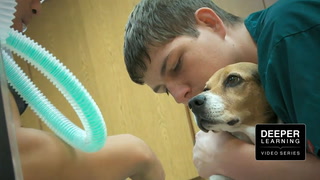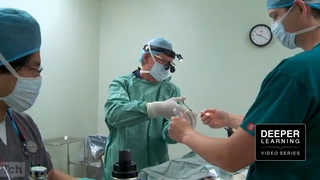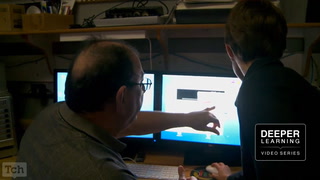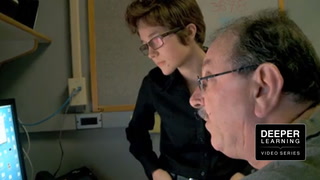Selecting Student Internships Transcript
Student: When you redo the blood pressure—
Narrator: Being with our students for four years, we get to learn about their interests—
Student: You’re not squared away?
Narrator: - their academic strengths, needs, and passions really help guide where we place our students with their internships.
Narrator: We put so much emphasis into our internship program because of the fact that the real-world, hand-on learning is a key component to most of my students’ learning.
Teacher: Make sure that I have them—
Narrator: First of all, what I like to know is what do they want to be when they grow up? I have them make a list and then we go through a career inventory, and have to do their own personality exams. I use online programs that are free so the kids can access it at any time, then let the computer tell them what they think that their interested. Then they do a comparison—
Teacher: I need all your personal project researching.
Narrator: Then, they start researching different careers.
Student: Here it is.
Narrator: Once they’ve received some information, they figure out how much schooling it takes, how much it cost, so we have a criteria that we follow to make sure that they’re taking the right steps towards the ultimate goal.
Student: I was a kid, everybody wants to be a vet at some point. I just kept it with me, and then in high school I told the internship coordinator. She looked at my end goal and what I wanted to be, and then she gave me an internship to work towards the end goal.
Narrator: Nathan originally started just loving pets, so we put him in a doggie day care.
Student: I could learn techniques and how to hold the dog and behaviors.
Narrator: Collaborating with his family, with our internship coordinator and with Nathan, we came up with him going to a veterinary clinic. With his experience and extensive resume, he interviewed for the position and was granted the position just based off of his previous internships and his skills and background working with animals.
Student: The internship coordinator took what I wanted to do in the end and gave me the experience to get to what I wanted to do. I’m learning the medical aspect of the side of veterinary field now.
Narrator: If there’s not a good fit, they are allowed to change, to look at different internships, to kind of find their niche and see what they like and what they don’t like.
Teacher: I know for year’s you’ve been interested in the human medical field.
Narrator: Parents know who their children are, and a school engaging families is real different than just telling parents who they think their children are. That’s real different.
Student: Here is halfway through the healing process. See, the stitches are out.
Narrator: It’s a lot of work when you’re out there prospecting. You might be cold-calling, really dipping into the community, because as soon as you place one student, there’s another one ready to move on. It’s constant, it’s constant evolution.
Student: It gave me the opportunity to see that this is actually what I want to do.
Narrator: Teaching them all those skills and focusing on the internship really gets them thinking, but it also makes them the decision-maker in their future.
[End of Audio]














2 Comments
Maria Flood May 21, 2014 10:26am
Andrew Frishman Mar 23, 2014 10:22am